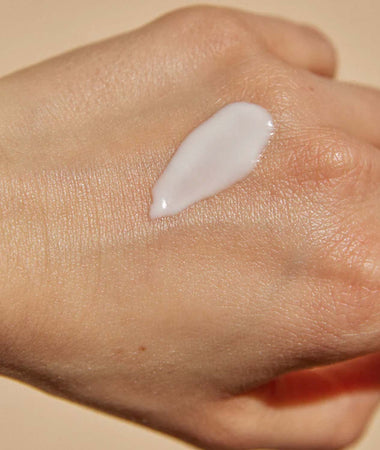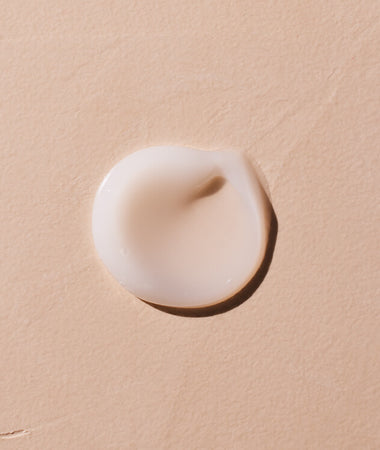
What Is The Dream Feed And How Can It Help Your Baby?
Keeping your little one on a regular sleep schedule is hard when hunger strikes in the middle of the night. Dream feeding your baby might be the perfect solution to keeping them full and sleepy so everyone can get a good night’s rest.
Let’s look at this feeding practice in more detail so you can decide if it’s right for you and your baby.
Table Of Contents
- Understanding The Dream Feed
- Sample Dream Feed Schedule
- Steps To Dream Feeding
- What If My Baby Won’t Go Back To Sleep After A Dream Feed?
- How Can The Dream Feed Help Your Baby?
- Risks Of The Dream Feed
- When To Stop The Dream Feed
- Dream Feeding Tips
Understanding The Dream Feed

Simply put, dream feeding is when a mother nurses her baby without waking them up. Getting in one final feeding session before you go to bed (and while they’re fast asleep) can keep your little one from waking up hungry in the middle of the night.
How Does It Work?
The goal of the dream feed is to shift your baby’s sleeping schedule so it is more in line with your own. Many mothers who feed their baby before bed and then try to get a long stretch of sleep are disappointed when they hear that middle-of-the-night wake-up call.
However, putting your baby to bed around eight at night and then squeezing in another feed between 10 and 11 (without disturbing their sleep) creates a long stretch of peaceful snoozing for everyone.
At What Ages Does Dream Feeding Work Best?
While dream feeding can be a wonderful way to gain a few more hours of sleep, it’s important to know there’s only about a six-month period when this process is recommended for your little one.
This is because newborns need to eat at least every two to four hours, making those wake-up calls inevitable. Around two to three months, however, their stomachs are larger and ready to try dream feeding!
Keep in mind that once you’ve started to work this into your routine, the recommended age to stop is between six months to nine months.
Sample Dream Feed Schedule
Now that you know more about how a dream feed works, you might be wondering what it looks like in practicality.
To help you visualize the process, here’s a sample evening feeding schedule for a baby who sleeps for 6 hours:
- 7:00 p.m. Bedtime routine
- 7:30 p.m. Feed before bed
- 8:00 p.m. Baby bedtime
- 10:00 p.m. Rouse baby enough for dream feed
- 10:30 p.m. Baby back in bed
- 4:00 a.m. Early morning feed and back to bed
- 7:00 a.m. Wake up and feed
As you can see, this schedule gives you a solid six hours of sleep, and it coincides with the time you want to sleep.
Without the dream feed, your little one’s 6-hour window between meals would take them from 7:00 p.m. to 1:00 a.m., which is tough on you. Implementing a dream feed makes you more likely to sleep when they do, giving you both some much-needed shut-eye.
Steps To Dream Feeding
Thankfully, the steps to dream feeding your baby are simple. It all starts before they doze off to sleep and ends once you head to bed as well.
Create (And Maintain) A Bedtime Routine

Maintaining your little one’s bedtime routine is a helpful way to keep them fast asleep while dream feeding. Start by bathing them with Mustela Gentle Cleansing Gel, then gently pat them dry and make sure their diaper is clean and fresh.
To encourage peaceful sleep or to bond with your baby before bed, treat them to a little massage using our Melting Massage Balm for healthy, nourished skin.
And for any little ones at the later end of dream feeding, be sure to dress them in a pair of Stelatopia Skin Soothing Pajamas to help moisturize their skin throughout the night.
Once they are all ready for bed, it’s time to feed them, put them to sleep, and wait!
Hold Without Waking
After your little one is fed and has been fast asleep for at least two hours, gently pick them up and hold them in your arms as you normally would to feed them. At this time, your baby should be resting but not quite in the deepest part of their slumber known as REM sleep.
Begin To Feed
With your baby in your arms, stimulate a latch and begin to feed. If breastfeeding, you can alternate about five to 10 minutes on each side. This length of feed should keep them from waking up hungry in the middle of the night.
Expert tip: If you’re experiencing some discomfort while breastfeeding, try our Nursing Comfort Balm. The lanolin-free balm moisturizes and protects nipples, eases discomfort, and helps to replenish and restore skin during and after breastfeeding.
If you’re formula feeding, your baby might not drink an entire 4 to 6-ounce bottle when sleepy. However, some babies will.
You could try starting with a small, snack-sized meal and see if that’s enough to keep them asleep longer. If it’s not, offer more the next night. Watch your baby’s cues to better understand how much to feed them.
Burp Your Baby
Don’t forget to burp the little one after they eat! Even though they’re sleeping, gas is still building up and will need to be released. Doing this will keep your baby from waking up in pain.
A good way to make sure your baby is getting all their gas out is to burp them between breastfeeding on each side. Or, if bottle feeding, take a few short breaks and then spend about five minutes burping them in your arms before putting them back to sleep.
Don’t be discouraged if your baby isn’t burping like they usually do. Do what you can but know that the gas will likely make its way out the other end as your little one snoozes.
Expert tip: Always keep micellar water and gentle cleansing wipes on hand in case of spit-up messes during burping!
Put Them Back To Bed

Finally, it’s time to put them back in the crib and let them sleep through the night with a full and satisfied tummy!
By working this feed into their routine, your baby’s schedule should begin to align better with yours, and they won’t wake up hungry until the early morning.
What If My Baby Won’t Go Back To Sleep After A Dream Feed?
While the above plan sounds simple, the final step might make you anxious. What happens if, after all of that, your baby doesn’t actually go back to sleep after their dream feed?
Now you’ve got a wide-awake baby, and you’re exhausted and ready for bed.
If your baby frequently has trouble falling back asleep after a dream feed, here are three possible causes:
- Your baby woke up too much
- The timing was off and you woke the baby during their deep sleep cycle
- Your baby is dealing with reflux or other tummy troubles
To encourage your baby to stay asleep after a dream feed, aim for a calm, relaxing environment. Keep the lights dim and talk in hushed tones.
If your baby needs a diaper change, take care of it quickly and quietly. Now is not the time to sing songs or use silly voices.
You can also try adjusting the timing of the feed. Try waking your baby 10 minutes earlier the next night to see if that helps.
If you suspect your little one is struggling with gas or reflux, try holding them upright for a few minutes before putting them back in their crib. As you do, gently rub their back. This may help settle their stomach so they can sleep.
Remember that the transition to a dream feed can take some experimenting. You’ll have to find the best time for your little one. Don’t be discouraged if it takes a few nights for you both to get the hang of it.
And, of course, if it does not work out, that’s OK. A dream feed isn’t required. There’s nothing wrong with trying another sleep training method to help your baby sleep longer at night.
How Can The Dream Feed Help Your Baby?
Dream feeding is one of many ways that you can bond with your little one, and the benefits make it so everyone can enjoy the process.
A Well-Nourished Little One
This feeding method creates a regular schedule for your baby, making it so they’re fed at the same time instead of waking up at random points throughout the night.
This routine also ensures they’re receiving enough calories so they have the right amount of energy stored in their little body.
Better Sleep For Your Baby
Once your baby is about three months old, long stretches of sleep can be a very normal part of their life. Unless they’re waking up hungry, that is!
Giving them a dream feed ensures that they get the unbroken sleep they need during the night. While it is still perfectly normal for them to wake up early in the morning, an 8-hour stretch of sleep is wonderful for sleep training.
Bonus: Better Sleep For You!

Speaking of long stretches of sleep — isn’t that just the dream? Getting your little one to stay fast asleep until morning is a fantastic way to help you get back into an unbroken sleep routine as well.
Your baby benefits, you benefit, everyone benefits from the dream feed.
Risks Of The Dream Feed
Although the dream feed might seem like a cure-all for sleep, there are risks to stay aware of, especially when first trying to get your baby into the habit.
And as with anything else concerning your baby, always check with their pediatrician before beginning something new.
Choking
When not done properly, dream feeding increases the risk that your baby might choke. To avoid this, keep your baby’s head elevated and their body upright. Never feed them while they’re lying down or too long past the two-hour mark of first putting them to bed.
Overfeeding
Another risk that comes along with the dream feed is feeding your little one too much. Nourishing them at this time might keep them from getting hungry later in the night, but there isn’t much that can be done if they don’t want the food to begin with.
Signs that a dream feed is giving your baby too much food include late-night fits or more spitting up than usual. Overfeeding can also lead to more soiled diapers and diaper rash.
However, if this does occur, taking care of their diaper rash is as simple as using our Diaper Rash Cream 123. This gentle formula soothes your baby’s skin and relieves irritation in the area. It continues working between diaper changes to help prevent the rash from coming back.
Interrupting Baby’s Natural Sleep Patterns
Waking your baby up for a feed could interrupt their sleep patterns and make it harder for them to settle back down.
To avoid this, watch your baby for signs of REM sleep. You may notice their arms or legs twitching or their eyelids fluttering. They might also be stirring. These are all good signs.
If you can wake your baby during this stage of sleep, they’ll be more likely to drift off again when their belly is full.
Teaching Them To Wake
Some babies get too used to waking up for a dream feed. They start to expect it. You may eventually notice them waking on their own in anticipation before you’re ready to feed them.
They may keep waking up, even when they’re old enough to no longer need this extra meal.
If you suspect your baby is waking up because they’ve gotten used to dream feeding, watch them for a few nights. If they wake up at the same time without your prompting, this night-time waking has become a habit.
Try cutting back on the amount of milk you give them or having them go a little longer before you wake them up. It’ll take time, but slowly tapering their dream feed will teach them to sleep through the night without needing one.
When To Stop The Dream Feed
We touched on this briefly, but we wanted to provide more information about when to stop dream feeding your little one.
Most babies are ready to sleep through the night by 6 months. However, some may continue to need a dream feed until they’re closer to 9 months or even a year.
Regardless of your baby’s age, here are some signs that it’s time to stop the dream feed:
- Your baby can sleep from the time you dream feed until morning
- You no longer see the benefit of waking your baby for a dream feed
- Your baby is overeating or gaining too much weight
- Your baby consistently has a hard time falling back asleep afterward
- The feed is causing you stress or worry
If you noticed any of these signs, consider stopping for a couple of days to see what happens. You can always reintroduce the feed if you decide it’s for the best.
How To Stop The Dream Feed
Once you decide to stop offering a dream feed, how do you actually wean your baby from this late-night meal?
You have two main options: cold turkey or gradual tapering. Let’s look at each.
Cold Turkey
You can simply stop offering a dream feed one night and see how your baby does. Chances are, if they’re ready to sleep through the night without it, they will.
If they do wake, gently soothe them and comfort them without offering a feed. It may take a few nights for them to adjust and learn to fall back asleep, but they’ll eventually get there.
Gradual Tapering
Another option is to slowly reduce the amount of milk you offer during the dream feed over several nights.
If you’re nursing, simply offer each breast for a shorter time. Then, keep cutting back until your baby no longer needs the feed. This method can help prevent engorgement, making it more comfortable for you.
If you’re bottle feeding, decrease the amount of milk by about 1 ounce every few nights until you’ve eliminated the feed.
Dream Feeding Tips

Time It Right
This point is worth reiterating!
If you rouse your baby up during a deep sleep cycle, they will have difficulty getting back to sleep. Instead, watch for their active sleep cycle when you see them stirring. Often, you’ll notice it within two to three hours of when they went to sleep.
Keep Things Calm
Don’t play with your baby or try to stimulate them during a dream feed. Minimize noise, lights, and other distractions to emphasize that it’s still time for sleeping.
Rouse, Don’t Wake
If your baby wakes up all the way, they may become more alert and want to play. Instead, try to keep them in a drowsy state.
Gently touch their cheek to stimulate their rooting reflex. Encourage them to latch onto the bottle or breast.
If this isn’t enough to rouse them, try removing their socks or gently unswaddling them. Talk in a low, quiet voice until your baby is ready to eat.
Be Patient
By the time you wake your baby up for a dream feed, you’re already tired. You’re looking forward to hitting the pillow for the night.
But babies don’t always do things according to our schedule. And some nights, they may be difficult to rouse. Or have trouble falling back asleep.
When those nights occur, be patient with your little one. Dream feeds are supposed to be gentle and relaxed, so don’t stress too much if things don’t go as planned.
You can always try again tomorrow.
Dream Feeding: Takeaways

If your little one is rejecting the dream feed, regularly waking up, or throwing a fit while eating, don’t be discouraged. This method is not for every baby, and the window to feed this way is short.
Another thing to keep in mind is that this might not be right for every parent. Creating a dream feed routine means coordinating a specific sleep schedule for you as well. When your little one is asleep, you’ll need to stay up for another two hours or wake up at the time of the feed.
And after a few months of adding a dream feed to your baby’s schedule, they won’t need this routine round of nourishment to sleep through the night. They’ll begin sleeping for long stretches of time all on their own.
No matter what stage your baby is in, we at Mustela are here to make sure they’re happy and healthy every step of the way! Shop a wide range of essentials from skincare to certified organic products for all the best ways to care for your little one today.
- reg.
- $28.00
- Sale price
-
$28.00
- reg.
-
reg.
- Unit price
- /per
- reg.
- $16.00
- Sale price
-
$16.00
- reg.
-
reg.
- Unit price
- /per
- reg.
- $23.00
- Sale price
-
$23.00
- reg.
-
reg.
- Unit price
- /per
Suggested Articles

6 Tips For Finding The Best Maternity Clothes

7 Breastfeeding Myths & Realities

The Best Postpartum Care Plan For New Mothers
Get tips, news
and exclusive offers







